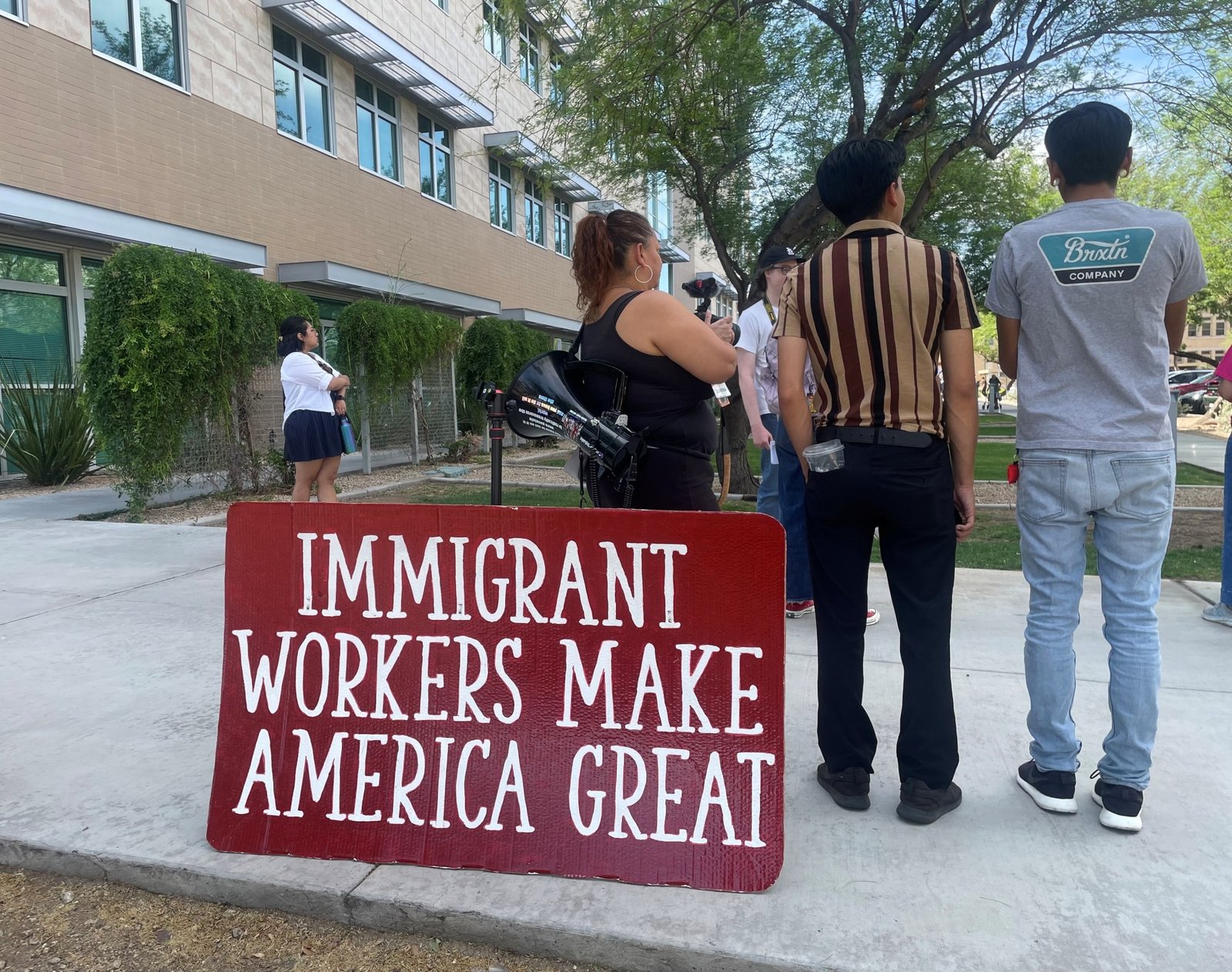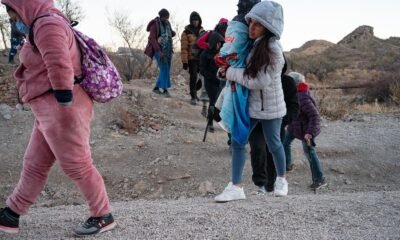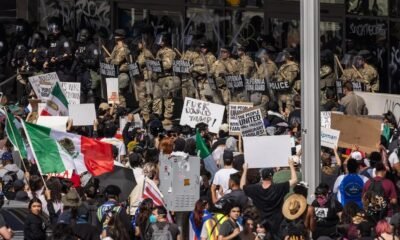Borderlands Resource Initiative
Migrants Left in Limbo: The Tough Choice of Court Hearings and Deportation

Federal immigration officials intensified their operations at the Phoenix Immigration Courthouse on Thursday, targeting migrants whose cases had been dismissed just moments earlier. This approach appears designed to reduce visibility from both protestors and the media.
Berta, a 48-year-old woman who preferred not to disclose her last name, spoke with the Arizona Mirror as she sought safety near protestors. She has lived in the U.S. for over 28 years, much longer than her time in Mexico.
“Returning to Mexico terrifies me,” she said. “I’ve been working with an immigration lawyer to secure my future here.” Berta attended a mandatory hearing on Thursday where her case was dismissed, only to face immediate danger from ICE agents waiting outside.
She represents one of many individuals caught in the crosshairs of heightened deportation efforts under President Trump’s administration. While promising to deport millions, the logistics have proven complex. Reports suggest Trump has expressed frustration over the limited number of deportations.
Recently, the administration initiated a strategy of conducting raids at immigration courthouses nationwide. This has directly impacted vulnerable migrants and asylum seekers attending scheduled hearings. Just last week, over a dozen individuals were detained in Phoenix after their cases were dismissed, leaving them susceptible to immediate deportation.
Berta’s experience mirrored this pattern. After her case dismissal, she and her lawyer, Erica Sanchez, quickly recognized the ICE presence and sought refuge in a bathroom. Once they were able to safely exit, they joined immigrant rights advocates nearby before Sanchez’s husband arrived to pick them up.
As they drove away, a federal agent sprinted toward them from the courthouse, but they managed to escape. Meanwhile, ICE agents employed binoculars from a nearby parking structure, tracking vehicles that immigrants were using to leave the area.
Thursday marked the second consecutive day ICE adapted their tactics, now following migrants outside the courthouse. Advocates suggest this shift aims to limit the ability of supporters to document arrests. At least one woman was detained after being stopped in her car, but it remains unclear how many others faced similar fates.
Despite these challenges, organizations advocating for immigrant rights have mobilized, communicating via various platforms to monitor ICE activities. Protesters warned individuals entering and exiting the courthouse about the presence of federal agents.
In one instance, a woman whose case had been dismissed was escorted by a protestor named “P,” who shared his own experiences with the immigration system. He emphasized the surreal nature of seeing arrests occur merely for attending a scheduled court hearing.
Another protestor, Artie, drew on his history, having immigrated to the U.S. at age 14. He expressed his desire to lessen ICE’s impact on immigrants. “Their tactics are outrageous,” he stated.
While the threat of detention looms large at the Phoenix Immigration Court, migrants are compelled to attend hearings. Failing to do so could result in an automatic deportation order, complicating any future attempts to navigate the legal system.
Carlos accompanied his wife to court on Thursday, anxiously observing the scene while she attended her hearing. He said the recent arrests made him fearful. “It almost makes you not want to show up,” he lamented. Yet, both he and his wife understood the necessity of being present to avoid dire consequences.


















